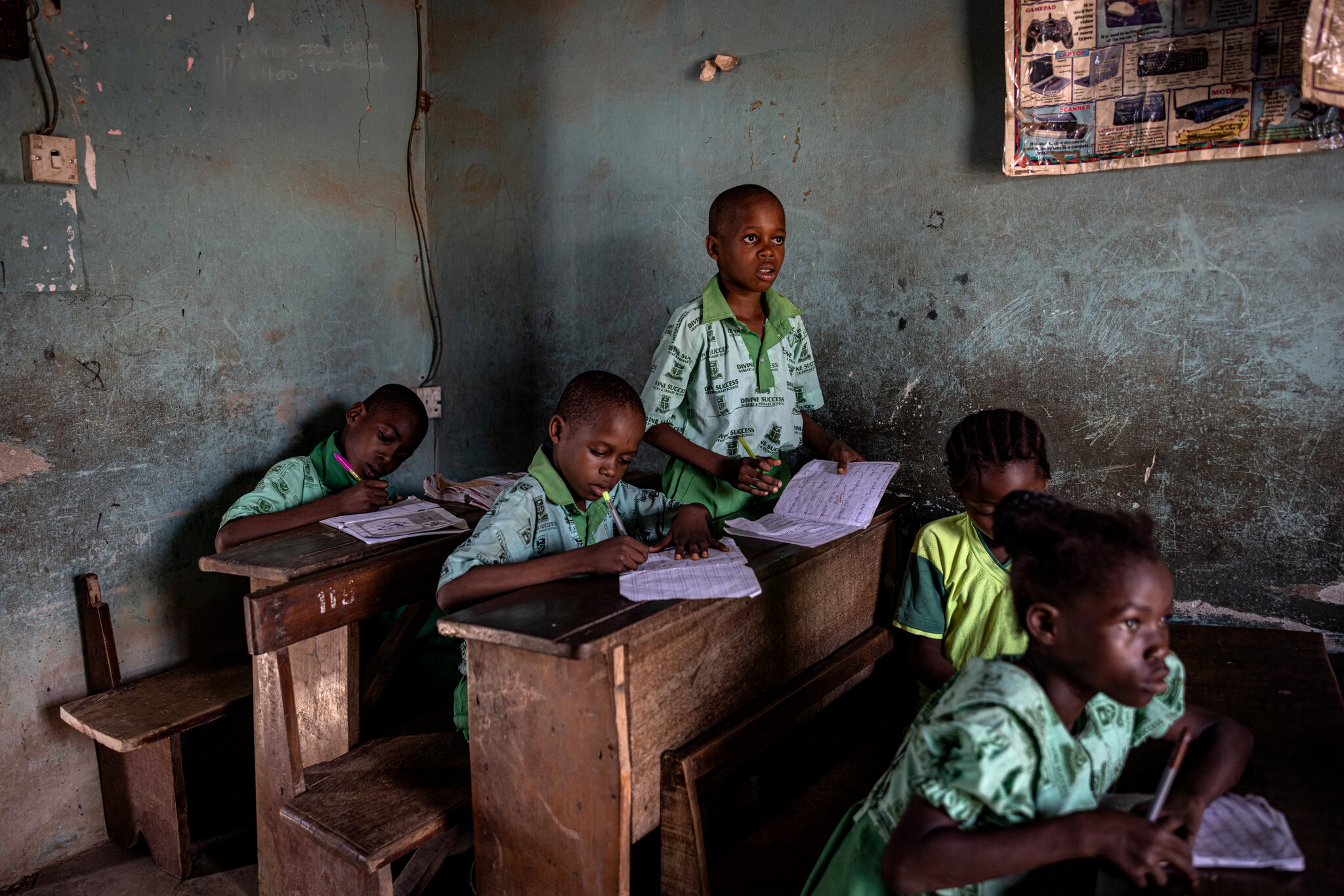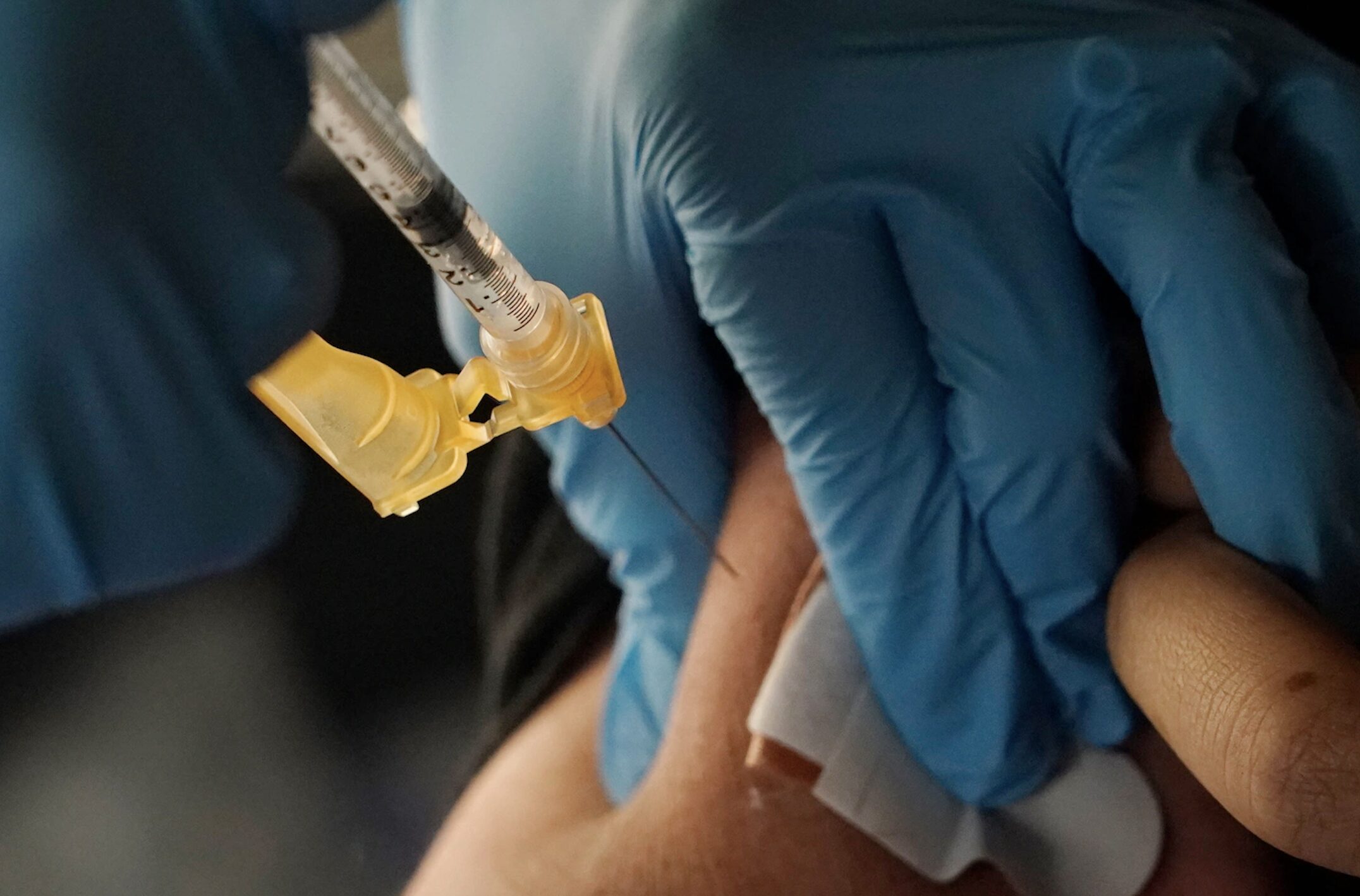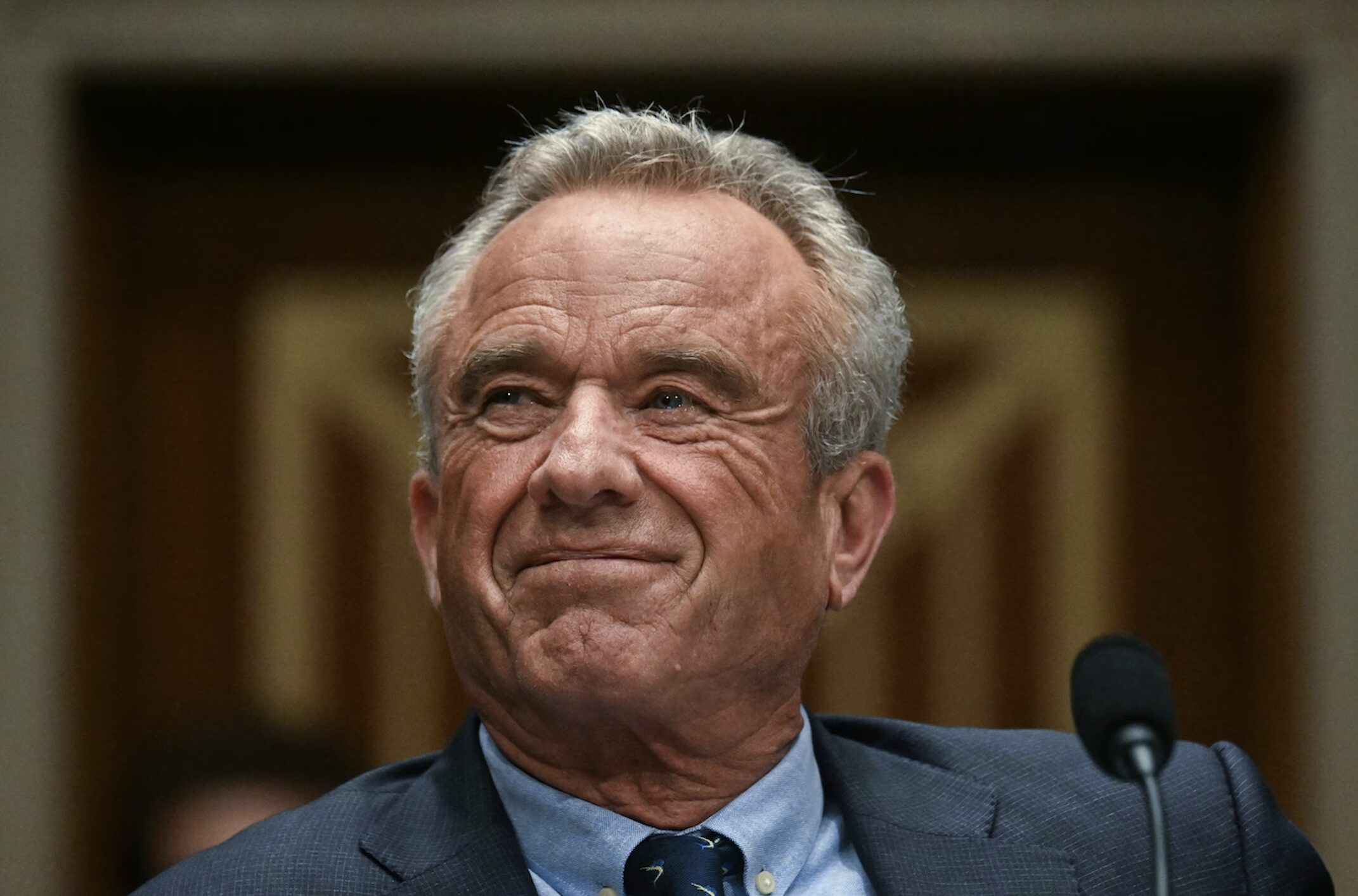It is hard to overstate the scale of the pandemic in America. On many days, a quarter of a million Americans become newly infected with the coronavirus, and four thousand die—numbers that dwarf the deadliest moments of last spring. The country’s covid-19 death toll has passed four hundred thousand and, according to Joe Biden’s chief of staff, will reach half a million in February; at any given time, more than a hundred thousand Americans are hospitalized with covid-19, and health systems are running out of space, equipment, and personnel. Meanwhile, a new coronavirus variant, thought to be fifty per cent more transmissible and possibly thirty per cent more deadly than the original, has been discovered in at least nine states. The U.S. has no genome-sequencing or reporting system in place, so it’s impossible to say just how widespread the new variant is, or whether other, more dangerous strains are already in circulation. In any event, the sheer contagiousness of the new version means that the death toll is almost certain to rise further and faster.
Vaccines are a reason for hope, and are already making a difference; nearly twenty million Americans have received a shot. But vaccine distribution has also proceeded chaotically and haphazardly. The problem isn’t strictly one of supply. Doses are being shipped as quickly as they can be manufactured, but only about half of the shots received by states have actually been administered. Meanwhile, four in ten people say that, even if vaccines were more widely available, they would hesitate to get innoculated, because they distrust the government and the approval process. Sixty per cent of older Americans—many of whom are now eligible for vaccination—say they don’t know where or when to get immunized.
It’s a strange moment in our nation’s history—a contest between error and effort. After a year of mismanagement, America is racing to vaccinate the vulnerable; a new Administration is taking over just as a vastly more contagious form of the virus threatens to accelerate the surge. The pandemic is a juggernaut, bearing down upon us. Can Joe Biden and his team stop it?
The new Administration has proposed a wide-ranging, two-trillion-dollar plan to turn things around. The plan includes stimulus checks, expanded unemployment benefits, a minimum-wage increase, and funding to help schools open safely. But its most important component is vaccination. Biden has pledged to deliver a hundred and fifty million shots in his first hundred days in office; he has also announced that his Administration is nearing deals with Pfizer and Moderna to secure an additional two hundred million doses by the end of the summer. Together with the four hundred million doses the companies already plan to deliver, that would be enough to vaccinate every American adult. But distribution is still a problem. The pace has been accelerating; on several days last week, more than a million Americans were vaccinated. Even at that rate, however, it will take a year and a half to vaccinate eighty per cent of the U.S. population. The pace must accelerate further.
The challenges of vaccine distribution are daunting and well known: the need for ultra-cold storage and shipping, the difficulty of coördinating multiple doses spaced weeks apart, an underfunded public-health infrastructure, the politicization of the pandemic, and growing vaccine hesitancy. “The vaccination campaign is going to be among the most complex tasks in American history,” Tom Frieden, who was the director of the Centers for Disease Control and Prevention under Barack Obama, told me. Still, Frieden believes that, with the right communication, funding, planning, and execution, these obstacles could be overcome. And, because the risk of life-threatening illness is concentrated in certain groups, targeted vaccinations will have an outsized effect on slowing deaths. Nursing-home residents account for some forty per cent of U.S. covid-19 deaths. Frieden said that, if most of this group were vaccinated by March, “You’ve protected your most vulnerable flank.”
Biden’s vaccination strategy departs from Donald Trump’s in many ways, most fundamentally in the idea that the federal government should partner closely with states to support the rapid acceleration of immunizations. The Trump Administration largely abdicated its responsibility to support vaccine distribution. “They saw their role as getting the vaccines developed, approved, and shipped,” Leana Wen, an emergency physician and public-health professor at George Washington University, told me. “That is no small feat. But they washed their hands entirely of helping with the last mile. And that’s what ultimately saves lives.” Wen continued, “There’s a misunderstanding of the proper roles of the federal and state governments. You don’t want the feds operating clinics. You don’t want them telling you what to do. But you do expect the federal government to ask states, ‘What do you need?’ You expect it to say, ‘These are the metrics we hope to meet—what can you do right now and what can we help with?’ ”
The specifics of Biden’s plan can be divided into four categories: expanding eligibility, creating vaccination sites, bolstering the public-health workforce, and securing production. As a first step, the new Administration will recommend that the states relax their criteria for vaccine eligibility to include all Americans older than sixty-five, as well as essential workers such as teachers and grocery-store employees. Biden’s advisers argue that the initial guidance from the C.D.C., which limited the first round of vaccinations to health-care workers and nursing-home residents, was theoretically sound but practically unworkable: strict eligibility criteria and the limited shelf-life of mRNA vaccines have meant that, in some places, doses sit in freezers or are thrown out, while in others desperate Americans camp overnight only to be denied. (Some medical providers have had to discard vaccines because they couldn’t find enough people who met the eligibility criteria before their doses expired.)
Biden’s plan will use federal resources and emergency-contracting powers to support or create vaccination centers across the country. The federal government will deliver vaccines to local pharmacies and cover the costs that states incur when using fema and the National Guard for vaccine distribution. The Administration also plans to launch targeted programs for rural health clinics, community-health centers, and tribal health services, and to deliver vaccines to those living in jails and homeless shelters. This commitment is in accord not just with an egalitarian ethos but with public-health fundamentals: congregate settings are viral hot spots, which, left unchecked, threaten the health of those living in them and nearby.
More vaccination sites will require more medical personnel, but state and local health departments have been underfunded and understaffed for decades. “They didn’t have what they needed before the pandemic, and that’s even more true now,” Wen, who previously served as Baltimore’s health commissioner, told me. Although Congress has allotted some funding for states, it falls far short of what’s needed. “It’s been too little and come too late,” Wen said. “We’re months behind where we should be in terms of bolstering our distribution infrastructure.” Biden has called on Congress to provide funding to hire a hundred thousand public-health workers to support vaccination and contact-tracing efforts. That investment would nearly triple the number of community health workers in the country and set a foundation for a more robust public-health system in the years to come. In the meantime, the Administration will encourage states to relax scope-of-practice laws—which restrict the services that various medical professions are permitted to provide—and waive licensing requirements, so that more clinicians, including retired health-care workers, can administer vaccines.
Finally, the Administration plans to use the Defense Production Act—a law, passed during the Korean War, that allows the government to compel businesses to prioritize activities needed for national defense—to provide the country with enough vials, syringes, needles, and other supplies to effectively store, refrigerate, and transport millions of vaccine doses. In part, leveraging the D.P.A. is important because it helps insure that people who receive the first dose of the vaccine will be able to receive the second on schedule.
The Biden plan is bold and comprehensive; it includes many of the measures that public-health experts have been advocating for months. Much of it—invoking the D.P.A., mobilizing federal resources, erecting emergency vaccination centers, establishing clear guidance on vaccine distribution and eligibility—can be accomplished through executive action or the bully pulpit. But other parts, such as funding public-health workers and supercharging vaccine administration, will require support from Congress and coöperation from states. In any event, Wen told me, an effective vaccination campaign will get us only so far. “Vaccines are not going to get us out of the immediate surge,” she said. “The Biden team needs to set the right expectations. Otherwise, people will say, ‘We’re vaccinating all these people. Why are cases still going up?’ The public deserves clear communication about what vaccines can achieve and when they can achieve it.” She went on, “The immediate trajectory of the pandemic really depends on people’s behavior. It’s unrealistic to expect that, when Biden starts to talk about physical distancing, it will suddenly convince everyone in the country to act differently.”
The need for distancing has never been greater. America’s vaccination effort is unfolding against the backdrop of a vast viral surge. In December, the U.S. recorded more coronavirus infections, hospitalizations, and deaths than in any prior month. Health-care systems are only now beginning to contend with new cases resulting from Christmas and New Year’s get-togethers. Even in optimistic scenarios—assuming Biden makes good on his pledge and then some—the vaccines will come too late for too many: the brutal reality is that, in all likelihood, another hundred and fifty thousand Americans will die of covid-19 in the first hundred days of his Presidency. “The essence of the problem is that, on the one hand, with the vaccines, we have more rationale for hope than we’ve ever had,” Frieden said. “On the other hand, we have to double-down on protection protocols.” Epidemiological modelling from prior epidemics suggests that, perversely, optimism about the end of an outbreak can lead to its persistence; the knowledge that the vaccines are effective may seem to license risky behavior that will spread the disease.
Distancing, tracing, isolating: these “non-pharmaceutical interventions” fall within the realm of public health. Under the Trump Administration, the United States went without a national, coördinated public-health response. States have had to bid against one another for critical supplies; testing and contact tracing remain inadequate, and public-health agencies are sidelined. The lack of federal support has been incomprehensible and deadly. Now, as new and more contagious strains of the coronavirus emerge, it’s also becoming clear that the country has no surveillance system to track genetic variants. We’re flying blind—unable to detect, much less extinguish, the coronavirus mutants that threaten to upend the depressing equilibrium we’ve accepted to date.
At the center of Biden’s efforts will be a push to harmonize the U.S. response. He plans to create a federal Pandemic Testing Board to oversee the distribution of tests, and his relief plan includes fifty billion dollars for strengthening the country’s testing program, in addition to a call for funds that will create the infrastructure to monitor for new variants. He will ask every governor to issue a mask mandate. The first executive order he signed—the “100 Days Masking Challenge”—requires masks on all federal property; another order requires masks on planes, trains, or intercity buses. He’s called for a “Supply Commander” to work with governors on the coördinated procurement of P.P.E., drugs, and ventilators. He will reëngage with the World Health Organization and other global health agencies.
Curtailing the pandemic’s damage will require not just strategy but stamina. Biden must help Americans find the fortitude to muscle through mandates and restrictions until enough of us get vaccinated. This may take longer than we’d like. “We should expect the pandemic to continue to test America for the entirety of Biden’s first term,” Ashish Jha, the dean of Brown’s public-health school, told me. “Life will be much closer to normal, but there will still be challenges.” Even if vaccines are widely available, and even if the majority of Americans agree to be vaccinated, the virus will find places to thrive. “Herd immunity isn’t a magic light switch that turns off the pandemic,” Jha said. “Certain communities will have low vaccination rates, and you’re going to have outbreaks. They will fizzle, because most people around them will be immune, but they’ll still occur and they’ll still cause big problems.” In some places around the country, hospitals will still fill. The threat posed by possible new strains of the virus, which could be more transmissible, lethal, or resistant to vaccines, will persist.
Looking back on the past year, one might wonder whether America’s decentralized system and political and cultural divisions render the country incapable of contending with a threat like the coronavirus. The United States has become a bitterly partisan nation, and millions of Americans remain skeptical about the virus and the vaccines. Governors have wide latitude in how they manage public-health threats; the country has nearly three thousand public-health departments, and the power to quarantine rests largely with state and local officials. The absence of a national plan has forced states to develop their own criteria for opening schools and businesses. But, even if more federal guidance had been offered, states would still have been free to go their own ways. And, as the virus finds life in one region as it’s suppressed in another, it’s become clear that the sheer scale of the United States also presents a major challenge: the government can impose some restrictions on travel, but American citizens generally have the right to go where they want. It is, as we say, a free country.
And yet it’s not so easy to blame America’s coronavirus failures on its decentralized system. Germany also has decentralized governance, with sixteen partly sovereign states (or Länder) enjoying significant autonomy. But in March, when cases started to rise in North Rhine-Westphalia, the federal government and the German states convened to develop a “uniform approach” to fighting the virus. The common guidelines—which were not legally binding—outlined how localities should mitigate the spread of the virus in businesses, schools, hospitals, nursing homes, places of worship, and other social settings. In April, Winfried Kretschmann, the governor of Germany’s third-largest state and a member of an opposition party, contrasted the German and American approaches: “We can see in the United States that some governors are taking matters into their own hands when there is someone at the helm who at first denied all of these threats. Something like that is completely out of the question here.” After suppressing the virus for much of last year, Germany has recently suffered a surge in covid-19 infections and deaths; over time, some states have grown more resistant to public-health measures, which has limited Angela Merkel’s ability to respond. Even so, the German death toll is far lower than that of other Western democracies.
German citizens are far from united in their views on the virus. In August, thousands gathered at Berlin’s Brandenburg Gate to protest government measures; some claimed that mask mandates were a step toward enslaving the German people. “It’s not like other countries don’t deal with this stuff,” Jha told me. “Protests are not uniquely American. There are large, vocal groups in Germany who think masks are Angela Merkel’s way of stealing their freedom. What’s different is that those people don’t end up having the same purchase on policy that they do in the United States. That kind of crazy, fringe thinking has been infiltrating American policymaking for a while now.” David Gergen, a professor at Harvard’s Kennedy School of Government and a senior political analyst for CNN, has served in four Administrations, for both Republican and Democratic Presidents; since he joined the Nixon White House, in 1971, he has witnessed eight Presidential transitions. He’s convinced this one is the most important. “A transition in power isn’t just about legislation and executive orders,” Gergen told me. “It creates cultural and attitudinal change. It’s an opportunity for the country to reset.”
Some patterns are hard to break. Much of Biden’s agenda requires money—and, therefore, the support of Congress. Biden seeks to make huge investments in response to the pandemic’s health and economic damage; he’s called for billions in funding for schools, for health-insurance expansions, for caregiving programs, for paid sick leave, for unemployment benefits, for stimulus checks. Even with narrow Democratic control of Congress, this level of investment will be a tall order. Joe Manchin, the Democratic senator from West Virginia, has already signalled discomfort with the idea of more stimulus checks; other Democrats have complained that Biden’s plan doesn’t go far enough. Support from Republicans is unlikely. “It’s going to be very, very hard for Biden to convince Republicans to pass a two-trillion-dollar package,” Gergen said. “They’re going to turn into deficit hawks again.” Without a filibuster-proof majority, Democrats will likely resort to the budget-reconciliation process to pass parts of Biden’s agenda—provided they can hold every senator who caucuses with the party, with Vice-President Kamala Harris casting the tie-breaking vote.
Almost certainly, parts of Biden’s plan will be put into practice, whether through executive action or piecemeal legislation. But much of how the pandemic progresses will be determined not by laws but by citizens. “Command and control is never going to work in America,” Donald Berwick, a former administrator of the Centers for Medicare and Medicaid Services, told me. “You have to appeal to people’s values. You need to help them see why it’s important that we act, together, as a country toward a common goal.” Trust in institutions has plummeted in recent decades, amid a sustained assault on the idea of collective action. Biden, the ultimate institutionalist—he arrived in Washington at the age of thirty and spent the next half century serving in the Senate and as Vice-President—insists that he can return the country to a level of political comity that his critics, and many supporters, claim is unrealistic. He campaigned on restoring the “soul of America”; the central theme of his Inaugural Address was unity—“that most elusive of things in a democracy.”






